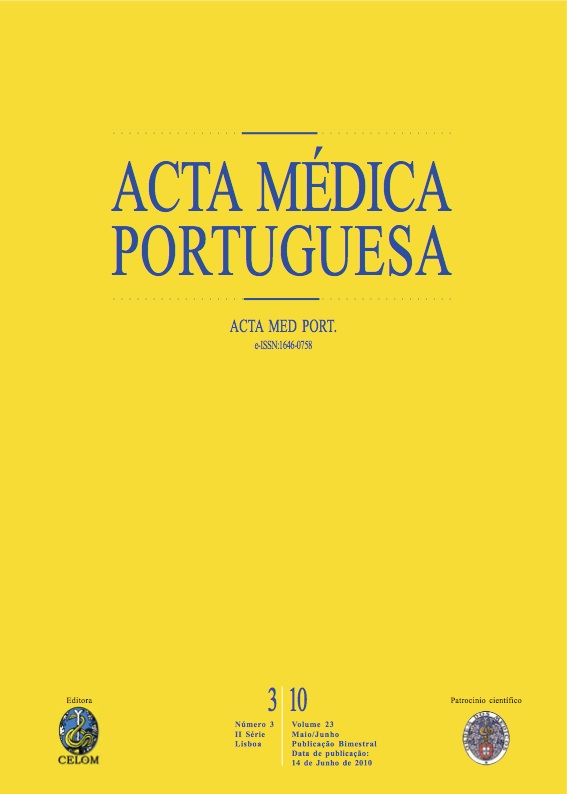Neurofibromatose tipo 1 - uma evolução maligna em idade pediátrica.
DOI:
https://doi.org/10.20344/amp.625Resumo
Neurofibromatosis type 1 is an autosomal dominant disease affecting one in 3000 to one in 4000 people, with a great variability of clinical expression. Individuals affected with neurofibromatosis type 1 have an increased risk of developing both benign and malignant tumors, supporting the classification of tumor predisposition syndrome. The most common tumor is the neurofibroma, a heterogeneous benign nerve sheath tumor, which represents the primary clinical characteristic of neurofibromatosis. The case reported refers to a adolescent boy with neurofibromatosis type 1 diagnosed at 20 months, who presented progressive growth of dorsal and lumbar intraspinal tumors since six years of age and diagnosis of malignant nerve sheath tumors at 17 years of age. In addition to describing a rare presentation of neurofibromatosis, because of location and early onset of complications, the authors discuss the difficulties of the therapeutic approach of this case.Downloads
Downloads
Como Citar
Edição
Secção
Licença
Todos os artigos publicados na AMP são de acesso aberto e cumprem os requisitos das agências de financiamento ou instituições académicas. Relativamente à utilização por terceiros a AMP rege-se pelos termos da licença Creative Commons ‘Atribuição – Uso Não-Comercial – (CC-BY-NC)’.
É da responsabilidade do autor obter permissão para reproduzir figuras, tabelas, etc., de outras publicações. Após a aceitação de um artigo, os autores serão convidados a preencher uma “Declaração de Responsabilidade Autoral e Partilha de Direitos de Autor “(http://www.actamedicaportuguesa.com/info/AMP-NormasPublicacao.pdf) e a “Declaração de Potenciais Conflitos de Interesse” (http://www.icmje.org/conflicts-of-interest) do ICMJE. Será enviado um e-mail ao autor correspondente, confirmando a receção do manuscrito.
Após a publicação, os autores ficam autorizados a disponibilizar os seus artigos em repositórios das suas instituições de origem, desde que mencionem sempre onde foram publicados e de acordo com a licença Creative Commons









